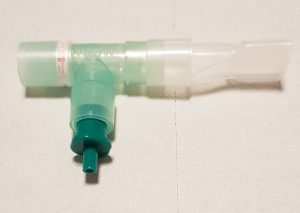 Niels Græsholm, Denmark
Niels Græsholm, Denmark
Danish Choral Directors Association
The Danish Choral Directors Association has for some time had a focus on health issues related to singing and on the possible impact and responsibility of choral directors and singing instructors on wellbeing, not only in our daily practice of making music with amateur or professional singers and choirs but also on the public at large. In our October 2020 seminar we covered quite a number of important and interesting subjects:
- from the neurological aspect: What actually happens in our brain when we sing? Comparing the activity in the brain of professional musicians performing to what happens in the brain of ‘ordinary’ people singing or listening to music
- to communal and collective singing as part of our Danish national heritage. The success story of a blue song book which has sold 1.4 million copies, has been the core repertoire in collective singing at a distance at home, and has been broadcast on national TV during the pandemic.

The seminar took place during the pandemic and everyone of course adhered to strict and substantial restrictions. Over the October weekend we read national newspapers posting articles about stories of COVID-19 being spread at choir rehearsals and concerts. And one workshop turned out to be even more interesting and important than anyone expected, as it might give a hint on how to cope with the long-term consequences of getting COVID-19: Singer and conductor Anne-Mette Strandgaard led a workshop on her practical work with patients suffering from different kinds of lung diseases. This article is based on her workshop and follow-up correspondence and an interview with Anne-Mette.
Anne-Mette holds a graduate degree in singing and choral conducting from the Royal Academy of Music in Aalborg, Denmark. Her major thesis was on working with lung patients, and in this she laid the foundation for developing methods to give these patients a better quality of life through singing. Since 2014 she has worked with several groups of patients and collaborated with medical doctors to monitor the effect of her work. She is currently working on a book on the subject aimed at patients suffering from lung diseases as well as at singing instructors and choral directors.
Lung patients can suffer from a number of diseases. Some of the major ones are:
- Chronic obstructive pulmonary disease (COPD): A chronic inflammatory lung disease that causes obstructed airflow from the lungs.
- Chronic bronchitis: An inflammation and irritation of the bronchial tubes, causing mucus to build up.
- Emphysema: A lung condition where the inner walls of the air sacs in the lungs weaken and rupture, creating small numbers of larger air spaces instead of large numbers of smaller ones and causing shortness of breath.
- Cystic fibrosis: A hereditary condition which involves the production of much thicker and stickier mucus in the lungs than usual.
- Asthma: An inflammatory disease of the airways in the lungs, causing wheezing, coughing and shortness of breath.
The main purpose of Anne-Mette’s teaching is of course to increase the lung capacity for this group of patients. But she also addresses the psychological aspects of having respiratory problems – anxiety, shame and guilt – and a number of physical problems that are the consequences of lung disease. As choral directors and singing instructors, we are mostly accustomed to working with people who are motivated to sing and make music – almost always aiming at the musical performance. But when working with patients suffering from lung diseases, a different group of people enter our field who have rarely had any prior inclination to sing or make music. Their reason for showing up is not the music, but a deep desire to have a better life or even to survive. And they will show up saying “I can’t sing, but I’ve heard it helps”. Some might resent singing as they were once told that they were out of tune and were ruining the music for everyone else – or they just had to sit at the back of the classroom during music lessons with no explanation whatsoever. In recent years the psychological impact of this type of experience has been called singing embarrassment or singing shame. The anxiety that some lung patients can feel is probably familiar to anyone who has gone snorkeling and dived a little too deep, and for a very short time was afraid that they wouldn’t get back up to the surface in time. For lung patients this feeling can be permanent: Will they get enough oxygen, and how little can they move to spare the oxygen they have? This anxiety can extend as far as a fear of dying.
On top of this, some COPD patients struggle with a huge sense of guilt, as COPD is almost always a consequence of many years of heavy smoking.
In these circumstances, the first goal must be to make everyone feel safe and welcome in the company of equals. Singing shame can vanish through the understanding that everyone is in it for the same reason: To have a good time while meeting the challenge of breathing. As people slowly shift the focus away from the quality of their music and the sound of their voice to being conscious of controlling the muscles involved in breathing, they let go of their embarrassment – though in some cases it can take a while.
The singers need to learn to control the muscles involved in breathing and to feel safe when breathing deeply. They tend to take quick, short breaths that only involve the upper part of the chest – a sort of emergency breathing that is primarily drawn from the muscles in the back, instead of using the diaphragm to enlarge the lungs and control the breath. For most lung patients the bronchi and/or the airways are clogged by mucus, so an instructor needs to develop exercises to remove mucus in order to free the airway before singing can even begin. One method is to use a PEP (Positive Expiratory Pressure) device, which is often used in airway clearance therapy (ACT). This device helps air get behind the mucus to remove it from the lung and airway walls and keep the airways open for longer.
Anne-Mette uses an exercise called The Skipper, which is actually taken from the ordinary repertoire of exercises for singers. It has turned out to have a positive effect on lung patients, creating resistance and pressure from below on the mucus to loosen it so they can cough it up:
Sit slightly bent forward on a chair with the hands on the knees and elbows pointing outwards. Inhale through an imaginary straw and feel the tension in the diaphragm. Remove the straw, press the lips together and exhale through the tense lips as if blowing a trumpet. Hold the tension for as long as possible.

Unfortunately, shortness of breath and hyperinflation is often accompanied by massive bodily tension – in the back, intercostal muscles, neck, throat and face – which must be dealt with in order to free the body and voice for singing. Anne-Mette spends quite some time on loosening up, and she teaches participants how to use massage balls for self-training at home.
Controlling breath through timing is essential! Short exercises and songs (primarily children’s songs and songs that everyone is familiar with), focusing on a breathing technique, can be effective. Singing a familiar repertoire is the key to feeling comfortable in an unknown field.
Anne-Mette introduces ‘yawn-inhalation’ – a long inhalation as we take when yawning – and ‘chock-inhalation’ – a short, quick breath as we take when we’re startled. The point is extending exhalation through singing, in order to empty the lungs as much as possible, and thereby achieving deep inhalation as a reflex (short or long). And it’s also about making participants feel confident that their body will come to the rescue if they need oxygen.
Example: Let it be – The Beatles
No breath: _
Yawn-inhalation: *
Chock-inhalation: ¤
When I find myself in times of trouble, Mother Mary comes to me _
Speaking words of wisdom, let it be *
And in my hour of darkness she is standing right in front of me _
Speaking words of wisdom, let it be *Let it be, let it be, let it be, let it be ¤
Whisper words of wisdom, let it be ¤Let it be, let it be, let it be, let it be ¤
Whisper words of wisdom, let it be ¤
Lung capacity and function is often measured as forced expiratory volume (FEV) and forced vital capacity (FVC) during a breathing test called spirometry. Forced expiratory volume (FEV) measures how much air a person can exhale during a forced breath. The amount of air exhaled can be measured during the first (FEV1), second (FEV2) and/or third seconds (FEV3) of the forced breath. Forced vital capacity (FVC) is the total amount of air you can exhale after inhaling as deeply as possible.
For Anne-Mette, the recognition and positive reactions from the participants have been the most important. But the fact that a chief physician and a lung specialist have kept on sending patients in her direction is also a confidence booster. The results from the first semester – the fall of 2013 and spring of 2014 – showed that the FEV1 results improved considerably. One singer suffering from COPD increased their FEV1 from 52% to 67%.
Anne-Mette and her group of singers have given a number of concerts, and little by little almost everyone felt comfortable singing outside the rehearsal room. They sang at lots of smaller events, but also at a major health conference and at the “Our Future Hospitals” exhibition at the Utzon Center in Aalborg.
All non-professional choral activities in Denmark are currently suspended due to the pandemic – including Anne-Mette’s singing with lung patients – and this has put a strain not only on this group of people but on the entire Danish choral community. In the midst of it all we are learning how important an activity choral singing is – not only as an enjoyable pastime, but also for the social, mental, physical and musical wellbeing of thousands of people. With lung patients, you can probably add life-saving as well. We are still learning about the long-term consequences of suffering from COVID-19, but these exercises and activities may help these patients enjoy a better quality of life.
In the fall of 2021 the Danish Choral Directors Association will follow up on the issue of singing and health with workshops on the impact of singing on Parkinson’s disease – a new project initiated by the Danish Parkinson’s Association. In this context the focus is still on breathing and wellbeing, but on the impact on speech for this group of patients.
 Niels Græsholm is Associate professor in choral conducting at the University of Copenhagen, Music School Consultant for the Danish Ministry of Culture, Chairman – the Danish Choral Directors Association, Chairman – Nordisk Korforum, IFCM Board member. He holds a degree in music pedagogy from the Royal Danish Academy of Music, a graduate diploma in choral pedagogy from the Academy of Music and Drama, University of Gothenburg, Sweden, and a Master of Public Governance from Copenhagen Business School.
Niels Græsholm is Associate professor in choral conducting at the University of Copenhagen, Music School Consultant for the Danish Ministry of Culture, Chairman – the Danish Choral Directors Association, Chairman – Nordisk Korforum, IFCM Board member. He holds a degree in music pedagogy from the Royal Danish Academy of Music, a graduate diploma in choral pedagogy from the Academy of Music and Drama, University of Gothenburg, Sweden, and a Master of Public Governance from Copenhagen Business School.
Edited by Christopher Lutton, UK

